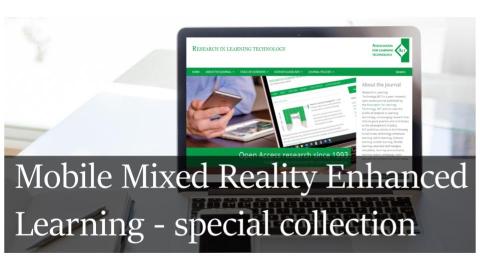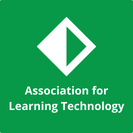
Guest editors
Associate Professor Thomas Cochrane, Centre for the Study of Higher Education, the University of Melbourne, Australia. Cochrane.t@unimelb.edu.au
Associate Professor James Birt, Faculty of Society and Design, Bond University, Australia. jbirt@bond.edu.au
Dr Vickel Narayan, Faculty of Business and Economics, University of Sydney, Australia. vickel.narayan@sydney.edu.au
Associate Professor Gail Wilson, Member Emeritus Faculty, Southern Cross University, Australia. Gail.Wilson@scu.edu.au
Focus of the special collection update
The 2020 update to the Mobile Mixed Reality (MMR) Special Collection for Research in Learning Technology provides an opportunity to explore the impact of MMR on online and hybrid mode education during the COVID-19 crisis.
Of particular interest for the 2020 special collection are investigations in areas that explore the impact of MMR in response to facilitating and enabling online and hybrid learning environments during COVID-19, such as, but not restricted to:
- How can new and emerging platforms of social VR (e.g. Mozilla Hubs) take VR beyond a solitary learning experience?
- How can MMR facilitate authentic Studio/Laboratory/Clinic-based education online, particularly in response to campus closures and the physical distancing requirements imposed by COVID-19 restrictions?
- How can MMR facilitate authentic assessment with the use of synthetic simulated patients/clients?
- Reviews of the state of the art of mobile augmented reality (AR) and mobile virtual reality (VR) and immersive reality (XR) in education
- Reviews of the key themes in recent mobile learning research in education
- Connecting people to places using AR/VR/XR
- The use of contextual sensors in education, such as iBeacons;
- The use of drones and telepresence in education; and
- Wearable technologies.
The methodological theme for this special collection focuses on research approaches that move beyond simple comparative case studies, and explore the application of Design-Based Research as a methodology for designing authentic mobile learning (Bannan et al., 2015), enabling new pedagogies such as Heutagogy (Blaschke & Hase, 2019; Moore, 2020). As such, a feature of this special collection continues to be to introduce the readership of RLT to the educational applications of mobile learning that they perhaps were unaware of or have not previously used.
Background
In the 2019 MMR special collection editorial James Birt (Cochrane et al., 2020) looked to the future of MMR in education:
It is certainly easy to conclude that technology enhances learning and indeed the upcoming BYO smartphone technologies will capture the creative imagination of MMR education delivery. Including, the shift towards 5G wireless networking, depth sensor cameras, integrated LiDAR and more complex machine learning algorithms capable of data processing.
But, predicting the future is difficult and made more complex with the rapid rise of technology innovation. Recently we have seen changes to the support of mobile VR with a shift away from mobile phone insertable HMDs (Google Cardboard, Samsung Gear VR) and 3DoF headsets (Oculus Go) to 6DoF standalone hardware (Oculus Quest, HTC VIVE Focus). Software support has also changed recently with companies such as Unity3D depreciating native support for various VR and AR hardware from their game engine requiring third party plugins.
If the COVID-19 pandemic has highlighted anything it's that there is a greater than ever need for communicative technology in education but even more so a willingness of educators and learning providers to understand, support and manage mobile technology enhanced learning. The future of MMR will not be driven through technology innovation alone as discussed in this special issue. Rather it will be a multi-faceted approach through understanding technology innovation, managing change, integrating learner centred design methodology, educator literacy and increased capacity for learning providers to support the scalable deployment of MMR devices and applications. It is therefore these current and near future challenges that we look forward to exploring in the 2020 edition of the special collection on MMR.
Submission instructions
Papers should be submitted through the RLT online submission system (https://journal.alt.ac.uk/index.php/rlt). Please select the journal section in the system ”Special Collection: Mobile Mixed Reality” when submitting your papers for review.
Deadlines for authors
Call for papers open: 31 August 2020
Submission deadline: 31 October 2020
Decision on manuscripts: 15 November 2020
Revised/final manuscripts: 15 January 2020
Publication: January/February 2021 (indicative)
References
Bannan, B., Cook, J., & Pachler, N. (2015). Reconceptualizing design research in the age of mobile learning. Interactive Learning Environments, 24(5), 1-16. https://doi.org/10.1080/10494820.2015.1018911
Blaschke, L. M., & Hase, S. (2019). Heutagogy and digital media networks: Setting students on the path to lifelong learning. Pacific Journal of Technology Enhanced Learning, 1(1), 1-14. https://doi.org/https://doi.org/10.24135/pjtel.v1i1.1
Cochrane, T., Birt, J., & Narayan, V. (2020, 11 May 2020). Editorial for 2019 update to the RLT special collection on mobile mixed reality [Journal]. Research in Learning Technology, 28(Special Collection). https://doi.org/https://doi.org/10.25304/rlt.v28.2424
Moore, R. L. (2020, 2020/07/02). Developing lifelong learning with heutagogy: contexts, critiques, and challenges. Distance Education, 41(3), 381-401. https://doi.org/10.1080/01587919.2020.1766949
